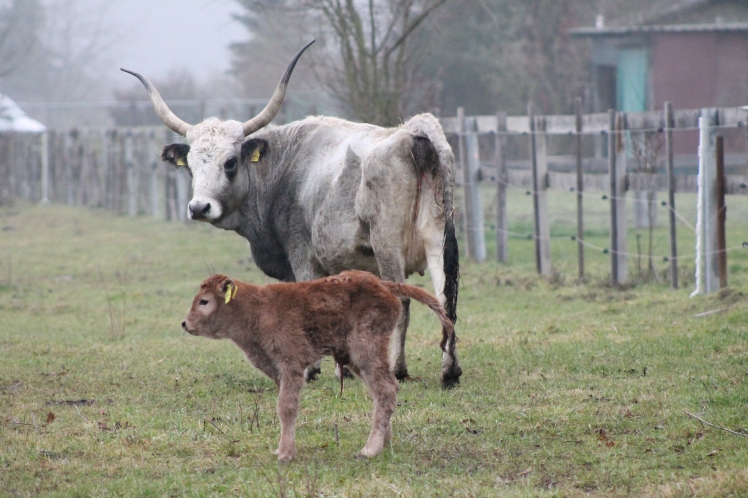It is a female Sayaguesa x Hungarian Grey calf, and perhaps the only one of its combination yet worldwide. The mother is the Hungarian Grey cow Domka, the father the deceased Sayaguesa bull Johnny.
It will be interesting to see what the horn shape is going to be like, and how dominant the red portion in its coat colour will be. Perhaps it might resemble some already existing Taurus and Tauros cows in overall looks.
 |
| The cross calf with its mother (© www.auerrind.com) |
Congratulations!